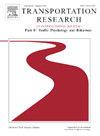改进有条件自动驾驶中计划过渡的两阶段过渡程序
IF 3.5
2区 工程技术
Q1 PSYCHOLOGY, APPLIED
Transportation Research Part F-Traffic Psychology and Behaviour
Pub Date : 2024-11-01
DOI:10.1016/j.trf.2024.10.019
引用次数: 0
摘要
有条件自动驾驶系统可在有限的条件下执行所有驾驶任务,但在计划的情况下,如接近高速公路出口时,仍需要人员接管。以往的研究表明,两阶段过渡程序可以降低计划过渡期间的潜在风险。在两阶段过渡程序中,驾驶员首先为接管做好准备,只有在驾驶员准备就绪后才实施接管。然而,驾驶员应何时开始为接管做准备并不确定。虽然提前启动准备请求可以获得更多的准备时间,但会给驾驶员带来更大的压力。本研究考察了准备时间为 5、10、20 和 55 秒的两阶段过渡程序的效果。结果表明,当准备时间相对较短时(5、10 或 20 秒),接管反应时间有所改善;但是,这不足以改善过渡后的驾驶性能。相比之下,准备时间相对较长(55 秒)时,接管反应时间和过渡后驾驶性能都有显著提高。此外,凝视分析表明,驾驶员在较短的准备时间内受到时间压力而匆忙。这些结果证实,如果准备时间较长,提前启动两阶段过渡会更有效。本文章由计算机程序翻译,如有差异,请以英文原文为准。
Refining two-stage transition procedures for planned transitions in conditionally automated driving
Conditionally automated driving systems perform all driving tasks under limited conditions, but still request a person to take over in planned situations, such as approaching a highway exit. Previous studies have indicated that the two-stage transition procedure can reduce potential risk during the planned transition. In the two-stage transition procedure, the driver first prepares for the takeover, which is only implemented after the driver is ready. However, when the drivers should begin to prepare for the takeover, was uncertain. Although initiating a preparation request early affords more preparation time, it places greater strain on the driver. This study examined the effects of a two-stage transition procedure with preparation times of 5, 10, 20, and 55 s. The results indicated that the takeover reaction time improved when the preparation time was relatively short (5, 10, or 20 s); however, this insufficiently improved the post-transition driving performance. By contrast, with a relatively long preparation time (55 s), both the takeover reaction time and post-transition driving performance notably improved. Additionally, gaze analysis indicated that drivers were subjected to time pressure and hurried during short preparation periods. These results confirm that a two-stage transition would be more effective when initiated earlier with more preparation time.
求助全文
通过发布文献求助,成功后即可免费获取论文全文。
去求助
来源期刊
CiteScore
7.60
自引率
14.60%
发文量
239
审稿时长
71 days
期刊介绍:
Transportation Research Part F: Traffic Psychology and Behaviour focuses on the behavioural and psychological aspects of traffic and transport. The aim of the journal is to enhance theory development, improve the quality of empirical studies and to stimulate the application of research findings in practice. TRF provides a focus and a means of communication for the considerable amount of research activities that are now being carried out in this field. The journal provides a forum for transportation researchers, psychologists, ergonomists, engineers and policy-makers with an interest in traffic and transport psychology.

 求助内容:
求助内容: 应助结果提醒方式:
应助结果提醒方式:


